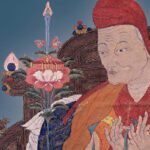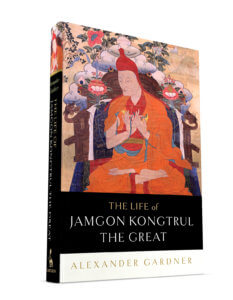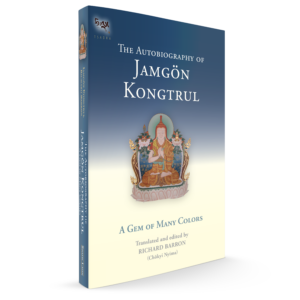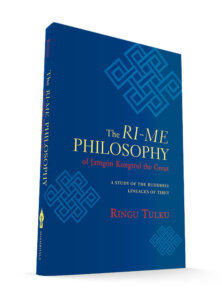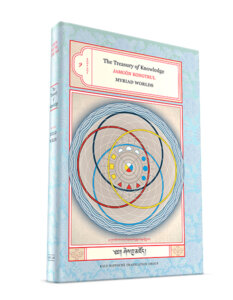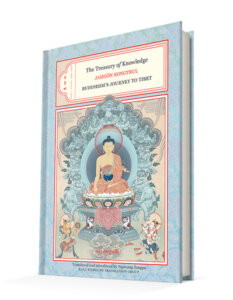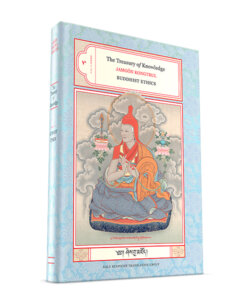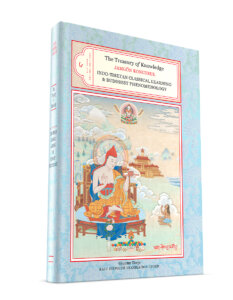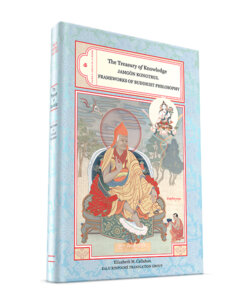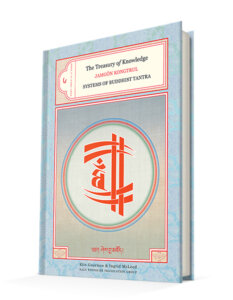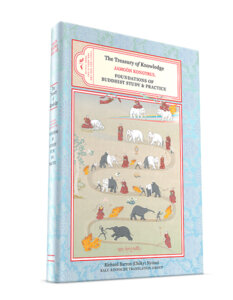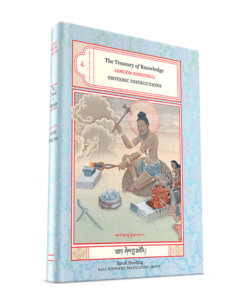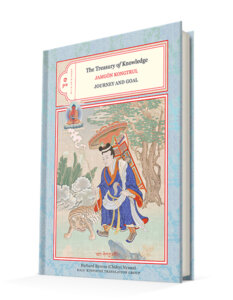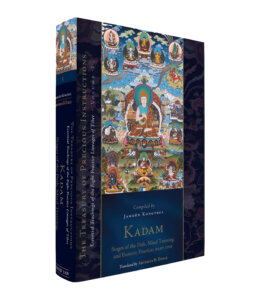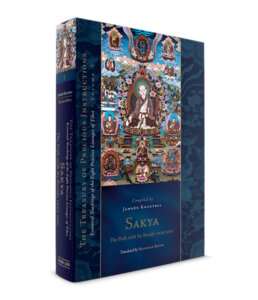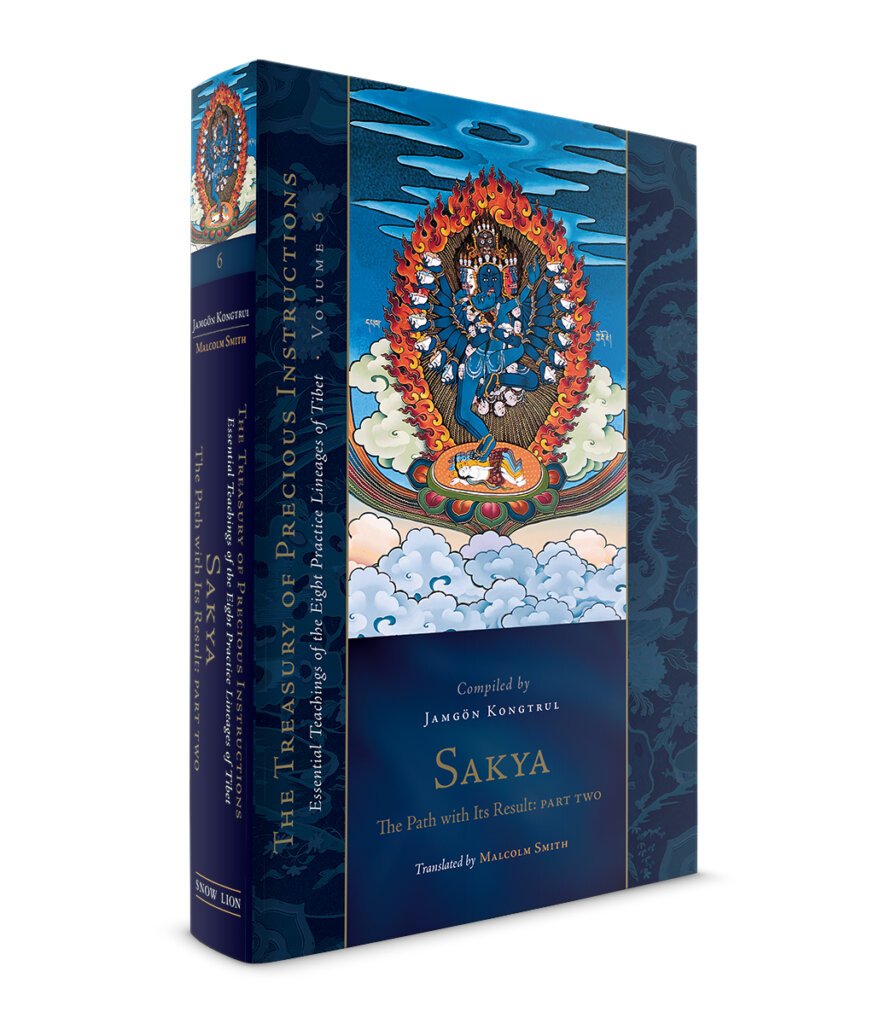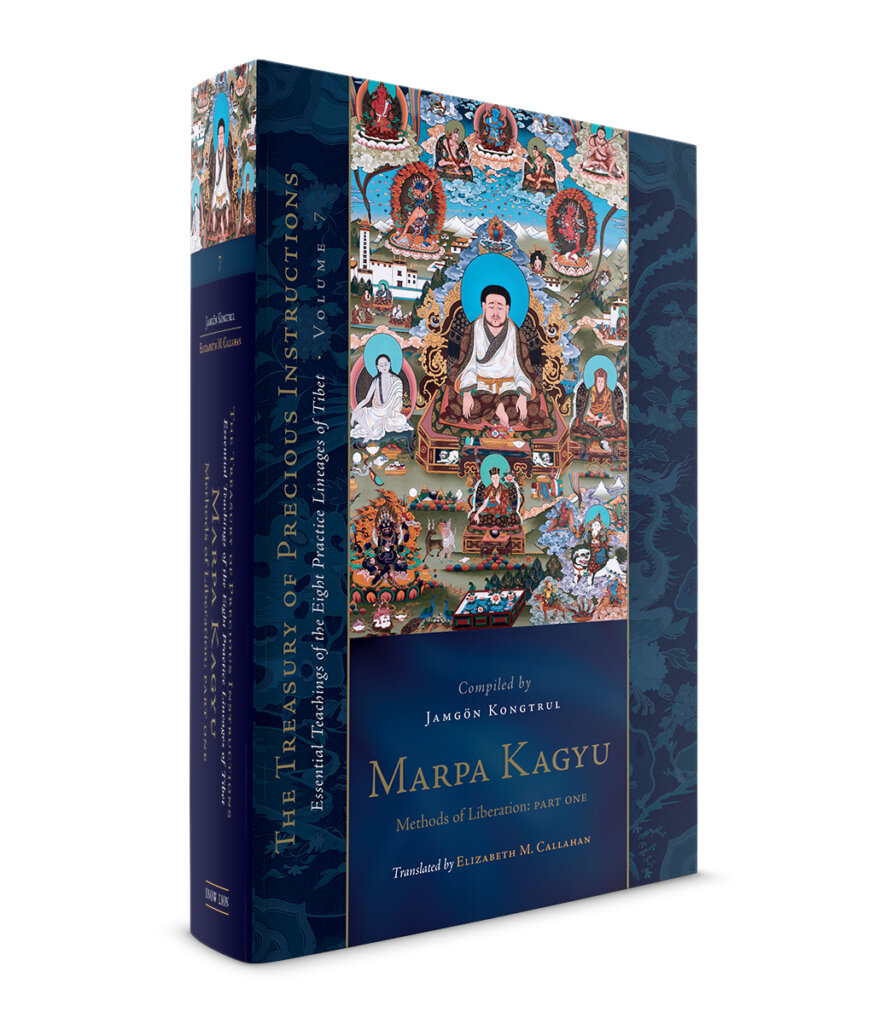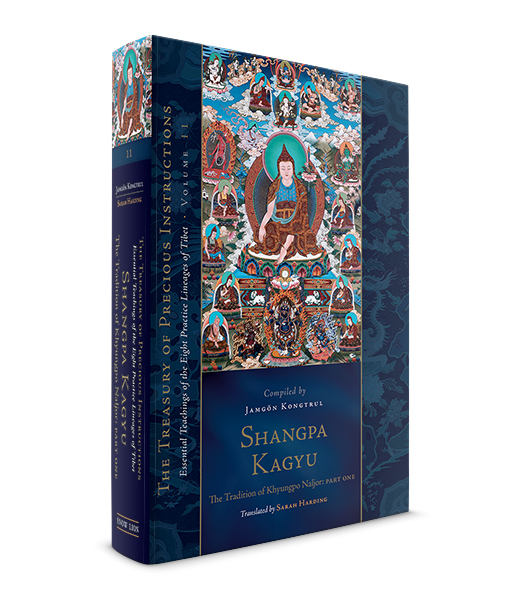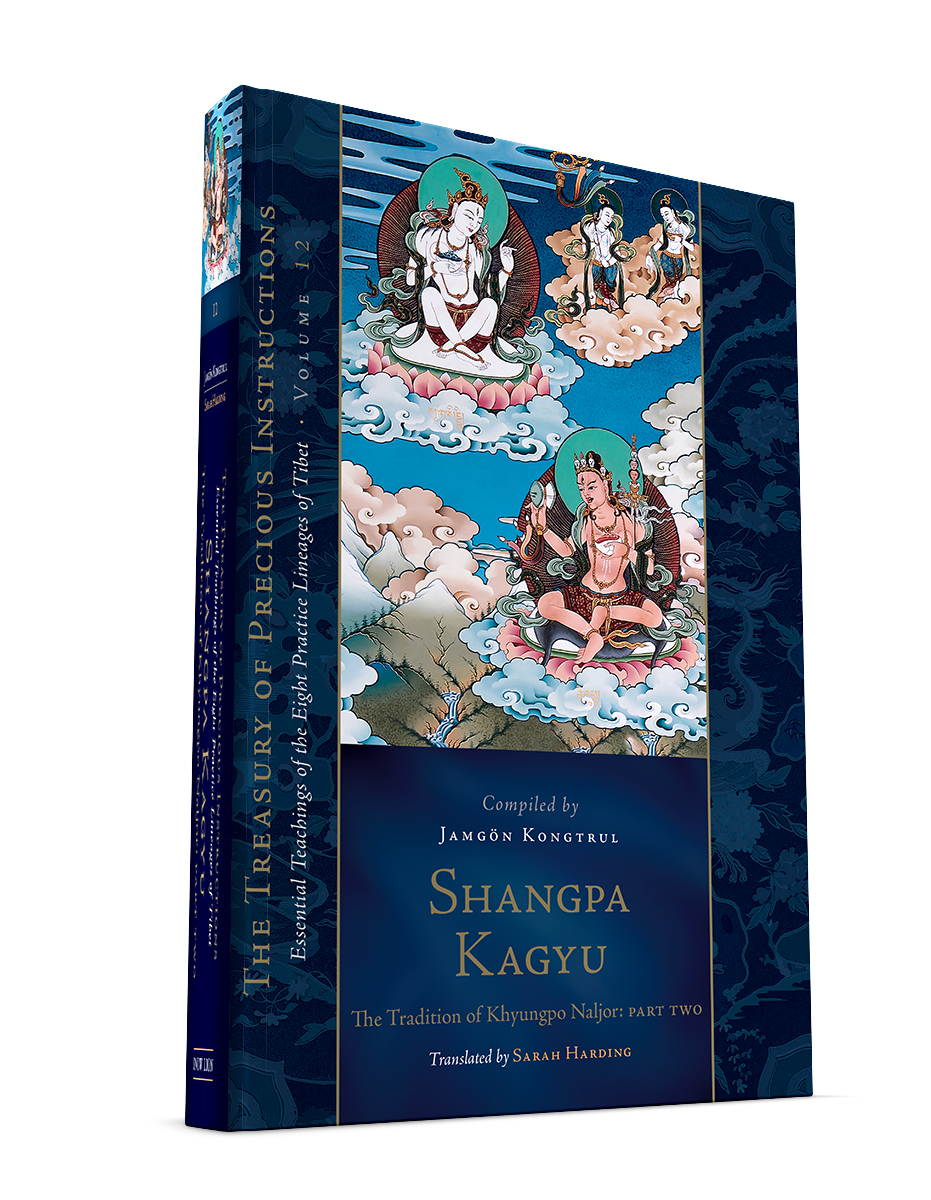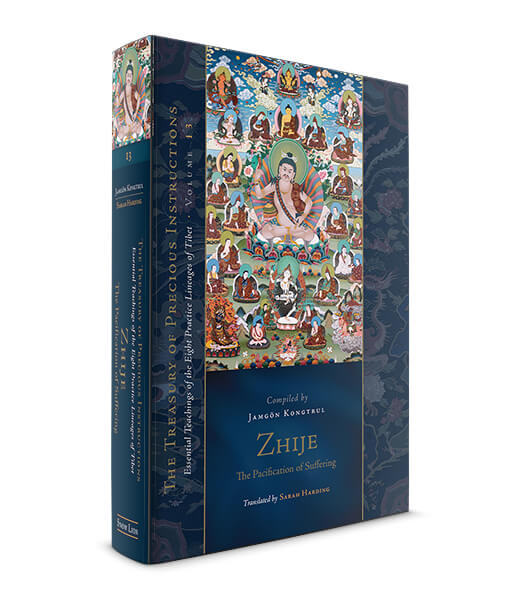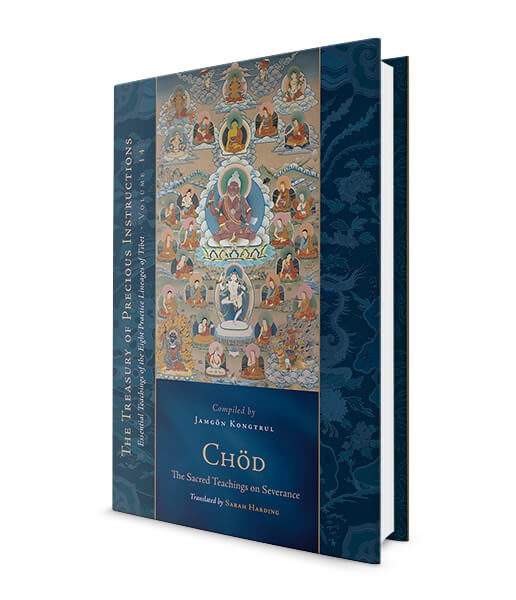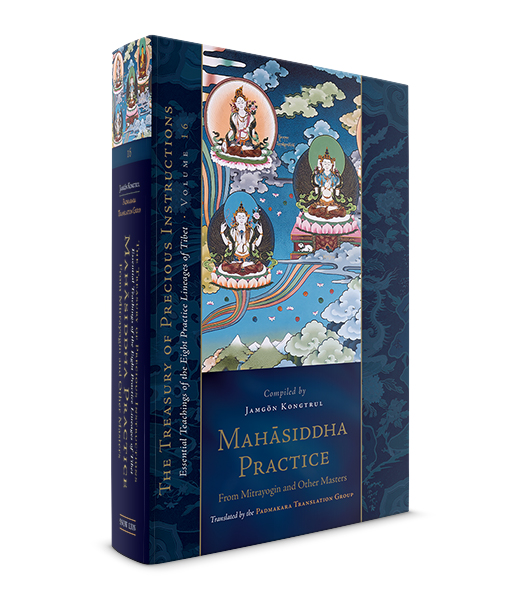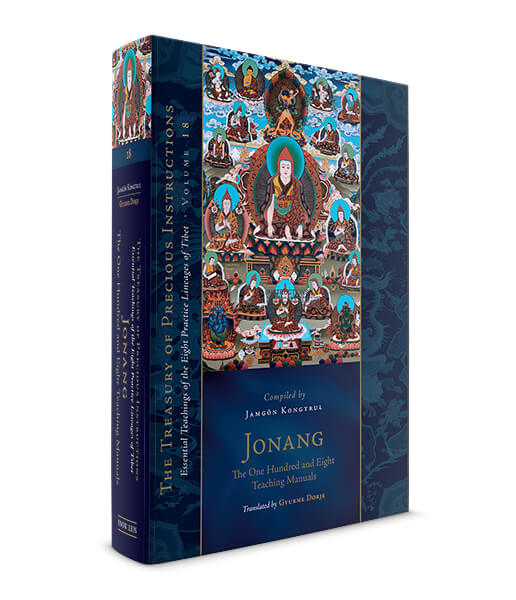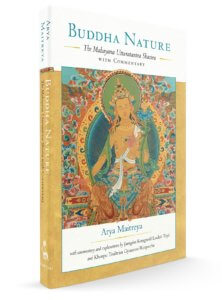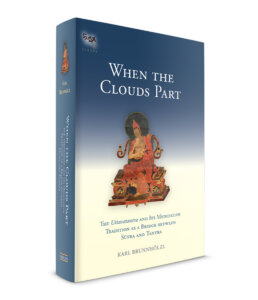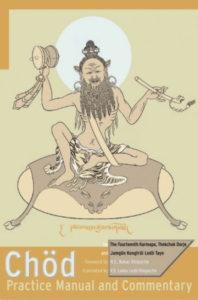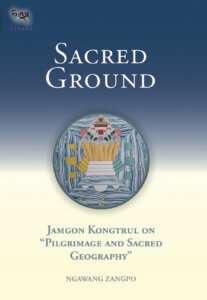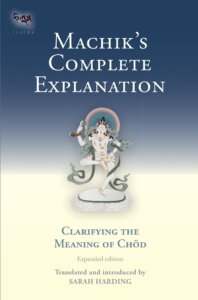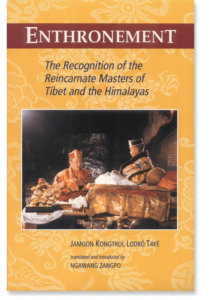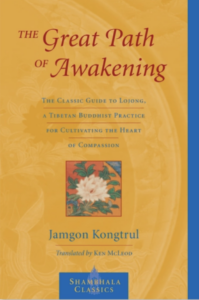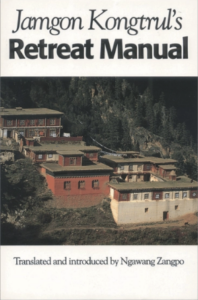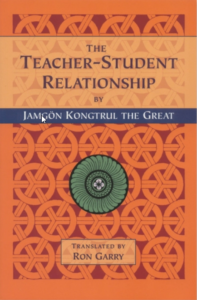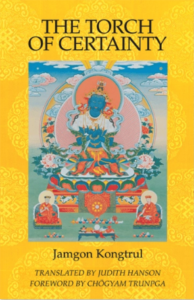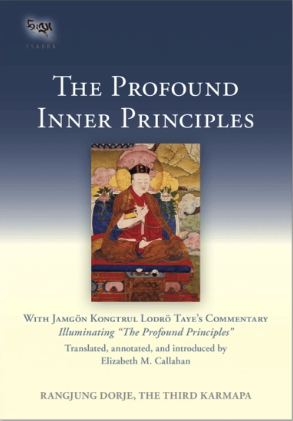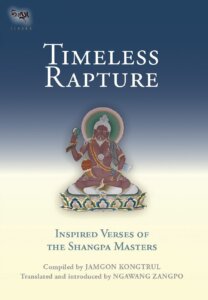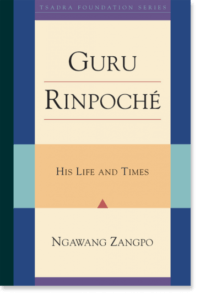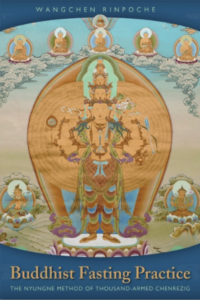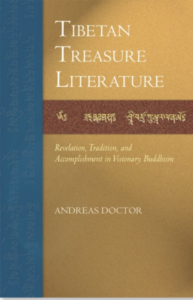Jamgön Kongtrul Lodrö Thaye

A Guide for Readers

Jamgön Kongtrul Lodrö Taye (1813–1900) was a versatile and prolific scholar and one of the most outstanding writers and teachers of his time in Tibet. He was a pivotal figure in eastern Tibet’s nonsectarian movement and made major contributions to education, politics, and medicine.
Jump to:
Books about Jamgön Kongtrul
The first two books have the most information about Kongtrul himself. These will be joined in 2018 by a definitive biography looking at the life, works, and legacy of this great figure. For a short biography online, please see Alak Zenkar Rinpoche’s biography hosted by Lotsawa House.

The Life of Jamgon Kongtrul the Great
By Alexander Gardner
This is the most accessible work available on Jamgon Kongtrul’s life, writings, and influence, written as a truly engaging historical biography. Alexander Gardner, who is a specialist of Jamgon Kongtrul, provides an intimate glimpse into the life of one of the most important Tibetan Buddhist teachers to have ever lived.
$39.95 - Hardcover
The Autobiography of Jamgön Kongtrul:
A Gem of Many Colors
Translated by Richard Barron (Chokyi Nyima)
This is one of the most fascinating accounts of a Tibetan Buddhist figure available. It also includes The Marvelous Gem-Like Vision: An Account of the Passing of and Funeral Observances for the All-Seeing Lord by Nesar Karma Tashi Chöphel and The Mirage of Nectar: A Fragmentary Account of the Past Lives of Pema Gargyi Wangchuk Thrinlé Drodul Tsal (his own secret name) by Jamgön Kongtrul Lodro Thaye.
$39.95 - Paperback
Kongtrul's Treasury of Knowledge (Sheja Dzö)
The Treasury of Knowledge is the largest single work by a Tibetan author translated into English. In Tibetan religious literature, its ten books stand out as a unique, encyclopedic masterpiece embodying the entire range of Buddhist teachings as they were preserved in Tibet. In his monumental work, Jamgön Kongtrul presents a complete account of the major lines of thought and practice that comprise Tibetan Buddhism.
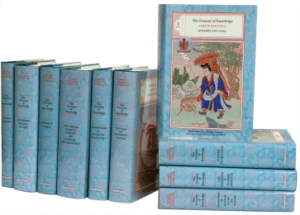
Brief history of The Treasury of Knowledge
From Ringu Tulku’s Ri-me Philosophy
Then, in the Dog and the Pig years [1862–63], when he was fifty years old, Kongtrul wrote the Treasury of Knowledge, both the root text and the commentary. He wrote the root text in the second month of the Water Dog year [1862], when he did a seven-day retreat on the hearing lineage teachings. Earlier, Lama Ngedön had said that Kongtrul should write a treatise on the three vows, and when that was done Lama Ngedön would write a commentary on it. However, Kongtrul thought that several texts on the three vows were already available, and that if he had to write something, it should be more comprehensive in scope and helpful for people who had not studied very much.
With that in mind, during the breaks between sessions of a one-week retreat, he wrote the root text of the Treasury of Knowledge, a treatise on the three higher trainings of discipline, meditation, and wisdom. Later on, he showed this to Jamyang Khyentse, who told him, “When you wrote this you must have been inspired by the blessings of the lamas, and your channels opened by the power of the dakinis. You should place the Treasury of Knowledge at the head of the Five Great Treasuries, and you need to write a commentary on it.”
To encourage him, Khyentse gave him many gifts along with these words. So, in only three months, from the fourth month until the seventh month of the Iron Pig year [1863], Kongtrul wrote the commentary to the Treasury of Knowledge, with Khenchen Tashi Özer acting as the scribe. The part that was left undone was finished during the warm weather of the following year.
Books in the Series
Myriad Worlds:
Book One
Translated by Kalu Rinpoche Translation Group
This first book of the Treasury, which serves as a prelude to Kongtrul’s survey, describes four major cosmological systems found in the Tibetan tradition—those associated with the Hinayana, Mahayana, Kalachakra, and Dzogchen teachings. Each of these cosmologies shows how the world arises from mind, whether through the accumulated results of past actions or from the constant striving of awareness to know itself.
Buddhism’s Journey to Tibet:
Book Two, Three, and Four
Translated by Ngawang Zangpo
Beginning with the appearance of the Buddha in our world (Book Two), it describes the Buddha’s life, his enlightenment, and what he taught (Book Three) from a multitude of Buddhist viewpoints. Buddhism’s transmission to and preservation in Tibet is the focus of the main part of this volume (Book Four), which describes the scriptural transmissions and lineages of meditation practice as well as the Buddhist arts that together make up the world of Tibetan Buddhism.
Buddhist Ethics:
Book Five
Translated by Kalu Rinpoche Translation Group
This volume is the fifth book of that work and is considered by many scholars to be its heart. Jamgön Kongtrul explains the complete code of personal liberation as it applies to both monastic and lay persons, the precepts for those aspiring to the life of a Bodhisattva, and the exceptional pledges for practitioners on the tantric path of pure perception.
Indo-Tibetan Classical Learning and Buddhist Phenomenology:
Book Six, Parts One and Two
Translated by Gyurme Dorje
The first two parts of Book Six, contained in this volume, respectively concern Indo-Tibetan classical learning and Buddhist phenomenology. The former analyzes the traditional subjects of phonology and Sanskrit grammar, logic, fine art, and medicine, along with astrology, poetics, prosody, synonymics, and dramaturgy. The principal non-Buddhist philosophical systems of ancient India are then summarized and contrasted with the hierarchical meditative concentrations and formless absorptions through which the “summit of cyclic existence” can genuinely be attained. Part Two examines the phenomenological structures of Abhidharma—the shared inheritance of all Buddhist traditions—from three distinct perspectives, corresponding to the three successive turnings of the doctrinal wheel.
Frameworks of Buddhist Philosophy:
Book Six, Part Three
Translated by Elizabeth M. Callahan
This volume, Frameworks of Buddhist Philosophy, is his masterful survey of the broad themes and subtle philosophical points found in more than fifteen hundred years of Buddhist philosophical writings. In a clear and systematic manner, he sets out the traditional framework of Buddhism’s three vehicles and four philosophical systems, and provides an overview of the key points of each system. His syncretic approach, which emphasizes the strengths of each of the systems and incorporates them into a comprehensive picture of philosophical endeavor, is well-suited for scholar-practitioners who seek awakening through the combination of analytical inquiry and meditation.
Systems of Buddhist Tantra:
Book Six, Part Four
Translated by Ingrid Loken McLeod & Elio Guarisco
The tantric path is often referred to as the indestructible way of secret mantra, the essence of which is the indestructible union of wisdom (the understanding of emptiness) and method (immutable great bliss). This volume sets forth the various systems that constitute this path, both those of the ancient tantra tradition and of the new tradition.
Foundations of Buddhist Study and Practice:
Book Seven and Book Eight, Parts One and Two
Translated by Richard Barron (Chokyi Nyima)
Foundations of Buddhist Study and Practice comprises Book Seven and Book Eight, Parts One and Two of the Treasury of Knowledge. Book Seven elucidates the various keys needed to correctly interpret, understand, and contemplate Buddhist teachings, including the secret teachings of the Vajrayana. Parts One and Two of Book Eight explain how the teachings are to be integrated into one’s life through the practice of meditation, which unites a state of one-pointed attention with profound insight into emptiness. Jamgön Kongtrul’s evenhanded, elegant, and authoritative statement of such controversial doctrines as unqualified emptiness (“self-empty”) and qualified emptiness (“other-empty”), provisional and definitive meaning, and conventional and ultimate truth as presented in the various schools of Tibetan Buddhism will appeal to both serious Dharma practitioners and advanced students and scholars.
The Elements of Tantric Practice:
Book Eight, Part Three
Translated by Ingrid Loken McLeod & Elio Guarisco
The Elements of Tantric Practice sets forth the essential components of the path of highest yoga tantra, a system of meditation that unites wisdom and compassion in its two phases of practice. The first phase, that of creation, relies primarily on the use of the imagination to effect personal transformation. The phase of completion allows the practitioner to perfect the process of transformation by training in methods that manipulate the energies and constituents of the mind and body. The result of this path is the direct experience of the fundamental nature of mind and phenomena. The Elements of Tantric Practice concerns the meditative processes of the inner system of secret mantra—that of highest yoga tantra—and is based primarily on tantric sources. The author introduces the subject by describing the path of tantra and its underlying principles. The main body of the book deals with two major elements essential to all highest yoga tantras: the practice of the creation phase and that of the completion phase. For the first phase, Kongtrul describes the visualization sequences in which ordinary perceptions are transformed into the forms of awakening and explains how these practices purify the stages of cyclic existence—life, death, and rebirth. The creation phase prepares the practitioner for the techniques of the completion phase, which entail focusing directly on the channels, winds, and vital essences that form the subtle body. Kongtrul presents the key elements of a variety of tantras, including the Guhyasamaja and Yamari, belonging to the class of father tantras and the Kalachakra Hevajra Chakrasamvara Mahamaya Buddhakapala and Tara mother tantras. All these tantras share a common goal: to make manifest the pristine awareness that is the union of emptiness and bliss.
Esoteric Instructions:
Book Eight, Part Four
Translated by Sarah Harding
This volume, Esoteric Instructions, deals with meditation—specifically tantric meditation. Esoteric Instructions is a collection of intimate records of personal teachings by masters that simplify tantric meditations by providing pertinent examples and very personal and helpful hints to disciples based on the master’s own experience. Although originally oral in nature, they have been codified and passed down through specific lineages from teacher to student.
Journey and Goal:
Books Nine and Ten
Translated by Richard Barron (Chokyi Nyima)
Journey and Goal focuses on the spiritual path—the journey and the resultant state of enlightenment to which it leads—the goal. Extensively varied perspectives are offered not only from within the many schools of Buddhism, but also from the different levels of practice and attainment. This is in fact the most comprehensive treatment of these themes to appear in the English language.
Kongtrul's Treasury of Precious Instructions (Damngak Rinpoche Dzö)
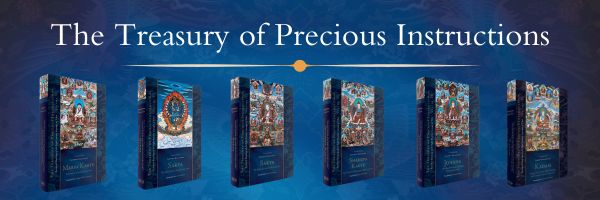
An Overview of the Treasury of Precious Instructions
2016 saw the first release in this eighteen-volume work on the eight lineages of accomplishment, one model for the classifications of practice traditions in Tibet. The Treasury of Precious Instructions was compiled in a roughly chronological order including the following:
- Nyingma - Two Volumes (876 pages)
- Kadampa Tradition - Two Volumes (1,190 pages)
- Sakya Path & Result - Two Volumes (930 pages)
- Marpa Kagyu - Four Volumes (1,567 pages)
- Shangpa Kagyu - Two Volumes (1,304 pages)
- Chöd & Zhije - Two Volumes (900 pages)
- Kalachakra & Orgyen Nyendrup - One Volume (626 pages)
- Mahasiddha Practice and Miscellaneous Teachings - Two volumes (1,088 pages)
- Jonang - One Volume (630 pages)
We are publishing the volumes asynchronously. Releases will spread out over the next few years.
You can also download the descriptive catalog here
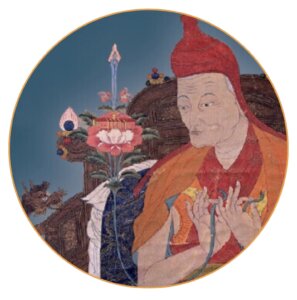
Available Books from the Treasury of Precious Instructions
Kadam:
Stages of the Path, Mind Training, and Esoteric Practice, Part One
Volume 3 of the Treasury of Precious Instructions
Translated by Artemus B. Engle
The third volume of this series covers the teachings and practices of the Kadam lineage. This tradition is based on the teachings of the Indian master Atiśa, who traveled to Tibet in the early eleventh century and stayed for twelve years transmitting teachings that would be embraced by many traditions of Tibetan Buddhism. The three categories of teachings covered here and in the fourth volume of the series—Stages of the Path, Mind Training, and esoteric instructions—correspond to three root texts: Atiśa’s Lamp for the Path to Enlightenment, the aphorisms of the Seven-Point Mind Training, and Atiśa’s Bodhisattva’s Jewel Garland.
Sakya:
The Path with Its Result, Part One
Volume 5 of the Treasury of Precious Instructions
Translated by Malcolm Smith
The fifth volume of this series, Sakya: The Path with Its Result, is the first of two volumes that present a selection of teachings and practices from the Path with Its Result (Lamdre) practice lineage of the Sakya tradition of Tibetan Buddhism. The Sakya lineage derives from Virūpa, Dombhi Heruka, and other Indian masters, or mahāsiddhas, and passes through Gayadhara and his Tibetan disciple Drokmi Lotsāwa Śākya Yeshe (992–1072). The practice tradition centers around the teaching and transmission of the Hevajra Tantra and its subsidiary texts.
Sakya:
The Path with Its Result, Part Two
Volume 6 of the Treasury of Precious Instructions
Translated by Malcolm Smith
The sixth volume of this series, and part two of Sakya: The Path with Its Result, completes Kongtrul’s presentation of a selection of texts from the Sakya tradition of Tibetan Buddhism. This volume includes the complete teachings and practices of the Eight Ancillary Path Cycles. These eight complete the nine path cycles that begin with Virūpa’s Vajra Verses found in volume five of the series. These path cycles are generally only taught to students who have received the entire Path with Its Result (Lamdre) teaching. They contain oral instructions transmitted to Drokmi Lotsāwa by the early eleventh-century Indian masters—Ācārya Vīravajra, Mahāsiddha Amoghavajra, Pandita Prajñāgupta of Oddiyāna, and Pandita Gayadhara. These cycles provide copious material on the creation and completion stages, which was incorporated later into the Three Tantras literature, the signature Vajrayāna teaching of the Sakya school.
Marpa Kagyu, Part 1:
Methods of Liberation
Volume 7 of the Treasury of Precious Instructions
Translated by Elizabeth M. Callahan
The seventh volume of the series, Marpa Kagyu, is the first of four volumes that present a selection of core instructions from the Marpa Kagyu lineage of Tibetan Buddhism. This lineage is named for the eleventh-century Tibetan Marpa Chokyi Lodrö of Lhodrak who traveled to India to study the sutras and tantras with many scholar-siddhas, the foremost being Naropa and Maitripa.
Shangpa Kagyu:
The Tradition of Khyungpo Naljor, Part Two
Volume 11 of the Treasury of Precious Instructions
Translated by Sarah Harding
This is the second of two volumes that present teachings and practices from the Shangpa Kagyu practice lineage of Tibetan Buddhism. This tradition derives from two Indian yoginīs, the dākinīs Niguma and Sukhasiddhi, and their disciple, the eleventh-century Tibetan yogi Khyungpo Naljor Tsultrim Gönpo of the Shang region of Tibet. There are forty texts in this volume, beginning with Jonang Tāranātha’s classic commentary and its supplement expounding the Six Dharmas of Niguma. It includes the definitive collection of the tantric bases of the Shangpa Kagyu—the five principal deities of the new translation (sarma) traditions and the Five-Deity Cakrasamvara practice. The source scriptures, liturgies, supplications, empowerment texts, instructions, and practice manuals were composed by Tangtong Gyalpo, Tāranātha, Jamgön Kongtrul, and others.
Shangpa Kagyu:
The Tradition of Khyungpo Naljor, Part Two
Volume 12 of the Treasury of Precious Instructions
Translated by Sarah Harding
This is the second of two volumes that present teachings and practices from the Shangpa Kagyu practice lineage of Tibetan Buddhism. This tradition derives from two Indian yoginīs, the dākinīs Niguma and Sukhasiddhi, and their disciple, the eleventh-century Tibetan yogi Khyungpo Naljor Tsultrim Gönpo of the Shang region of Tibet. There are forty texts in this volume, beginning with Jonang Tāranātha’s classic commentary and its supplement expounding the Six Dharmas of Niguma. It includes the definitive collection of the tantric bases of the Shangpa Kagyu—the five principal deities of the new translation (sarma) traditions and the Five-Deity Cakrasamvara practice. The source scriptures, liturgies, supplications, empowerment texts, instructions, and practice manuals were composed by Tangtong Gyalpo, Tāranātha, Jamgön Kongtrul, and others.
Zhije:
The Pacification of Suffering
Volume 13 of the Treasury of Precious Instructions
Translated by Sarah Harding
In this volume, Kongtrul presents a diverse corpus of texts from the Zhije (Pacification) tradition that trace especially to the South Indian master Dampa Sangye (d. 1117), whose teachings are also celebrated in the Chöd (Severance) tradition.
Chöd:
The Sacred Teachings on Severance
Volume 14 of the Treasury of Precious Instructions
Translated by Sarah Harding
In this, the fourteenth volume, Kongtrul compiles the teachings on Severance, or Chöd. It includes some of the tradition’s earliest source scriptures, such as the “grand poem” of Āryadeva, and numerous texts by the tradition’s renowned founder, Machik Lapdrön. Kongtrul also brings together the most significant texts on the rites of initiation, empowerments for practice, and wide-ranging instructions and guides for the support of practitioners.
Mahasiddha Practice:
From Maitrayogin and Other Masters
Volume 16 of the Treasury of Precious Instructions
Translated by Padmakara Translation Group
Mahāsiddha Practice, the sixteenth volume, presents a selection of teachings and practices centered on the mahāsiddhas, Indian tantric masters. The mahāsiddha Mitrayogin, whose work forms the majority of this volume, visited Tibet in the late twelfth century. His ritual texts along with instructions are here translated from Tibetan, including sādhanas, empowerments, guru yogas, authorization rituals for protector deities, and detailed compositions on Mahāmudrā practice, or resting in the nature of mind.
Jonang:
The One Hundred and Eight Teaching Manuals
Volume 18 of the Treasury of Precious Instructions
Translated by Gyurme Dorje
In this volume, Kongtrul expands on The One Hundred and Eight Guidebooks, a collection of teaching manuals compiled by the sixteenth-century Tibetan master Kunga Drolchok, adding Indic source texts, Tibetan antecedents, and later interpretations. Though compiled by a Jonangpa abbot and transmitted by the Jonang tradition, these teaching manuals are actually drawn from the Kadam, Sakya, Kagyu, and, to a lesser extent, Nyingma traditions.
Jamgön Kongtrul on Buddhanature
Buddha Nature:
The Mahayana Uttaratantra Shastra with Commentary
By Khenpo Tsultrim Gyamtso
Translated by Rosemarie Fuchs
This is Kongtrul’s The Unassailable Lion’s Roar, a commentary on one of the five Maitreya texts: the Uttaratantra. This text discusses the nature of our mind as the very basis of everything on the Buddhist path and presents Maitreya’s text as a background for the Mahamudra teachings in a way that is especially clear and easy to understand. Also included in this volume is a translation of the text itself, as well as Khenpo Tsultrim Gyatso’s additional commentary.
When the Clouds Part:
The Uttaratantra and Its Meditative Tradition as a Bridge between Sutra and Tantra
Translated by Karl Brunnhölzl
This extensive explanation of the Uttaratantra refers to Kongtrul nearly 100 times and includes a translation of his Guiding Instructions on the View of Great Shentong Madhyamaka - Light Rays of the Stainless Vajra Moon. Kontrul refers to this text as "the highest of all dharmas taught by the Buddha, being the unsurpassable one or the peak of the mahāyāna scriptures".
More by Jamgön Kongtrul
The Ri-me Philosophy of Jamgön Kongtrul the Great:
A Study of the Buddhist Lineages of Tibet
By Ringu Tulku
Translated by Ann Helm
This is the compelling study of the Ri-me “movement”—really a revitalization of many of the traditions within Tibet. It includes an introduction to the history and philosophy of those behind the Ri-me phenomenon; a biography of Jamgön Kongtrul the Great; helpful summaries of the eight lineages’ practice-and-study systems, which point out the different emphases of the schools; an explanation of the most hotly disputed concepts; and an overview of the old and new tantras.
Chöd Practice Manual and Commentary
Translated by V.V. Lama Lodo Rinpoche
This is a rich resource for Chöd practitioners. It contains the Chöd sadhana written by the Fourteenth Karmapa in three versions: Tibetan, a phonetic rendering of the Tibetan, and English translation. Jamgön Kongtrul’s commentary on the sadhana, which forms the bulk of this book, supplies the necessary amplification and clarification; it is given both in English and Tibetan. An important feature of the commentary is the inclusion of illustrations for the different stages of visualization discussed within the commentary. All in all, this is an essential practice tool and reference guide for the serious Chöd practitioner.
Sacred Ground:
Jamgön Kongtrul on “Pilgrimage and Sacred Geography”
By Ngawang Zangpo
This work describes two journeys: a journey outward to specific pilgrimage places in eastern Tibet, and a journey inward to the sacred world of tantra, accessible through contemplation and meditation. It sheds light on Himalayan Buddhists’ concepts of sacred land, places of pilgrimage in tantric Buddhism, and how pilgrimage is undertaken. It enhances our appreciation of the world and its sacred aspect everywhere—first and foremost, where we sit now. On the basis of this judicious choice of rare Tibetan texts, translated here for the first time, correlating inner and outer pilgrimage, this book is of considerable value to the Buddhist practitioner.
Machik’s Complete Explanation:
Clarifying the Meaning of Chöd (Expanded Edition)
By Sarah Harding
While this is not by Kongtrul, his influence comes clearly across throughout the translator’s introduction. This expanded edition also includes Machik Lapdrön’s earliest known teaching, the original source text for the tradition, The Great Bundle of Precepts on Severance (Chöd), which is found in Kongtrul’s Treasury of Precious Instructions. This pithy set of instructions reveals that the teachings of the perfection of wisdom are the true inspiration for Chöd. Machik developed a system, the Mahamudra Chöd, that takes the Buddha’s teachings as a basis and applies them to the immediate experiences of negative mind states and malignant forces. Her unique feminine approach is to invoke and nurture the very “demons” that we fear and hate, transforming those reactive emotions into love. It is the tantric version of developing compassion and fearlessness, a radical method of cutting through ego-fixation.
Enthronement:
The Recognition of the Reincarnate Masters of Tibet and the Himalayas
Translated by Ngawang Zangpo
Even the most casual contact with the culture, politics, or religion of Tibet and the surrounding region brings outsiders face-to-face with the institution of reincarnate spiritual masters. Past masters are identified as small children installed in their predecessor’s monastery in a ceremony called “enthronement” and educated to continue the work of their former incarnation. This custom has provided a principal source of spiritual renewal for Himalayan Buddhists for the past thousand years. The introduction places the subject of reincarnate meditation masters within two major contexts: the activity of bodhisattvas, and in modern Tibetan society, where the reappearance of past masters is both natural and profoundly moving. Tai Situpa Rinpoche, a contemporary reincarnate master and a leader of the Kagyu lineage, describes the process of finding other reincarnate masters.
The Classic Guide to Lojong, a Tibetan Buddhist Practice for Cultivating the Heart of Compassion
Translated by Ken McLeod
Here is a practical Buddhist guidebook that offers techniques for developing a truly compassionate heart in the midst of everyday life. For centuries, Tibetans have used fifty-nine pithy slogans originally presented in the Kadampa master Chekawa’s Seven Points of Mind Training—such as “A joyous state of mind is a constant support” and “Don’t talk about others' shortcomings”—as a means to awaken kindness, gentleness, and compassion.
This edition of The Great Path of Awakening contains an accessible, newly revised translation of the slogans from Chekawa’s text. It also includes illuminating commentary from Jamgön Kongtrul that provides further instruction on how to meet every situation with intelligence and an open heart.
Jamgön Kongtrul’s Retreat Manual
Translated by Ngawang Zangpo
The Kagyu and Nyingma traditions of Himalayan tantric Buddhism require a long period of intensive training in meditation—a three-year, three-month retreat—before a practitioner is considered to be a qualified teacher.Jamgön Kongtrul’s Retreat Manual was written in the mid-nineteenth century and is intended for those who wish to embark on this rigorous training. It guides them in preparing for retreat, provides full details of the program of meditation, and offers advice for their re-entry into the world.
The Teacher-Student Relationship
Translated by Ron Garry
It is crucial for students of Vajrayana Buddhism to find an authentic wisdom teacher and know how to properly rely upon that teacher in order to awaken to their Buddha Nature and thereby attain full enlightenment. Fortunately, the topic has been thoroughly explored by Jamgön Kongtrul in the tenth chapter of The Treasury of Knowledge, singled out here. This essential text clearly lays out what credentials and qualities one should look for in a wisdom teacher, why a wisdom teacher is necessary, and how the relationship between this teacher and disciple best develops once it is established.
The Torch of Certainty
Translated by Judith Hanson
is Kongtrul’s famous ngöndro text, exploring the nature of impermanence, the effects of karma, the development of an enlightened attitude, and devotion to the guru. Kalu Rinpoche, Deshung Rinpoche, and Chögyam Trungpa Rinpoche also add commentaries and explain the significance of The Torch of Certaintyfor modern-day students and practitioners of Tibetan Buddhism.
The Profound Inner Principles:
With Jamgön Kongtrul Lodro Taye’s Commentary Illuminating “The Profound Principles”
By The Third Karmapa
Translated by Elizabeth M. Callahan
With masterful clarity and precision, The Profound Inner Principles delineates the principles and foundations of Vajrayāna practice. Rangjung Dorje presents the nature of things—mental and physical—and looks at the cause of delusion, what delusion creates, and how delusion is corrected. His explanations capture the principles of the Vajrayāna’s niruttara tantras, with a special focus on the structure and functioning of the body.
This translation includes a commentary by Jamgön Kongtrul with extensive footnotes containing extracts from all the other important commentaries to The Profound Inner Principles, several glossaries with annotations by the translator, a works cited list, a selected bibliography, and an index.
Timeless Rapture:
Inspired Verse of the Shangpa Masters
Translated by Ngawang Zangpo
This book is a compilation of the songs of the Shangpa Kagyu masters and offers a rare glimpse into the mysticism of this tradition based mainly on the profound teaching of two women, Niguma and Sukhasiddhi. Kongtrul compiled this compendium of spontaneous verse sung by tantric Buddhist masters from the tenth century to the present and includes translations as well as short descriptions of each poet’s life and a historical overview of the lineage. Kongtrul chooses songs that are also teachings. They address thepractical and relevant questions for all Buddhists: how to live a meaningful life, how to confront death, and how to enter and remain within the sacred sanctuary of the mind’s nature: enlightenment.
Guru Rinpoche:
His Life and Times
By Ngawang Zangpo
Kongtrul was known to say that “there was no area of Tibetan soil larger than a horse’s hoof untouched by Guru Rinpoche’s feet.” This collection has four very different Tibetan accounts of his story: one by Jamgön Kongtrul; one according to the pre-Buddhist Tibetan religion Bön, by Jamyang Kyentse Wongpo; one based on Indian and early-Tibetan historical documents, by Taranata; and one by Dorje Tso. In addition, there are supplications by Guru Rinpoche and visualizations to accompany them by Jamgön Kongtrul.
Buddhist Fasting Practice:
The Nyungne Method of Thousand-armed Chenrezig
By Wangchen Rinpoche
While not by Kongtrul, Wangchen Rinpoche relies heavily on Kongtrul’s writings, referencing him throughout the book. Nyungne is a profound, two-and-a-half-day practice of purification and healing developed by a nun (from varying accounts Kashmiri or from the Swat area of present-day Pakistan) who developed this practice and healed her leprosy. It involves the keeping of strict vows; the second day is devoted to complete silence and fasting. The meditation centers on the recitations, mantras, and guided visualizations of the Thousand-Armed Chenrezig, the embodiment of all the buddhas’ loving-kindness and compassion. Translated as “abiding in the fast,” Nyungne is said to be effective in the healing of illness, the nurturing of compassion, and the purification of negative karma.
Tibetan Treasure Literature:
Revelation, Tradition, and Accomplishment in Visionary Buddhism
By Andreas Doctor
By Jamgon Mipham
The Treasure tradition of the Nyingma School of Tibetan Buddhism posits that in the eighth century, various adepts hid spiritual instructions (gter ma, lit. “Treasures”) for the purpose of future discovery at auspicious times. Tibetan Treasure Literature discusses central themes and personalities in the history and practice of this tradition.
*This exploration of the terma tradition has Kongtrul featured, no surprise considering the vastness of his work with terma texts.
Additional Books by Other Publishers
Other titles by Kongtrul include the volumes of Light of Wisdom (Rangjung Yeshe) and Creation and Completion (Wisdom) and, for an excellent source on terma, his own Hundred Tertons (KTD).
In addition, Lotsawa House hosts many other translations of Kongtrul in their Jamgön Kongtrul Lodrö Thaye Series.

